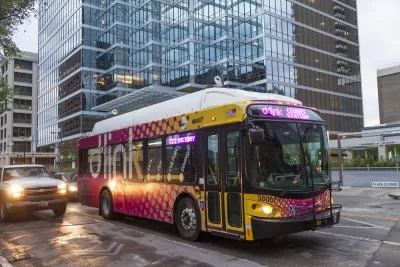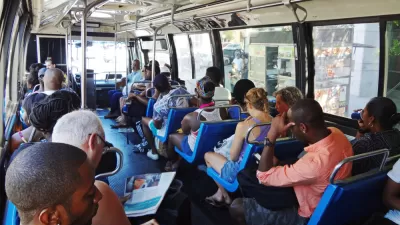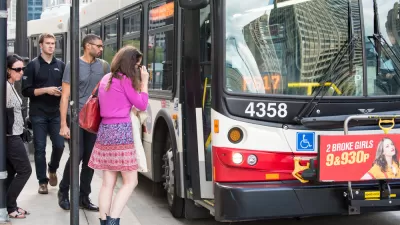While autonomous vehicles still face regulatory and technical challenges, investment in basic transportation infrastructure like buses and bike lanes can go a long way toward improving safety and taking cars off the road.

Despite rosy predictions that autonomous vehicles would rule American roads by now, writes Jacob Silverman in The New Republic, the technology still faces plenty of challenges, signaled in part by major ride-sharing companies shedding their autonomous vehicle divisions. "Across the industry, autonomous vehicle efforts have proven to be stubbornly difficult to bring to fruition, consuming billions of R&D dollars and thousands of engineering hours. Meanwhile, the infrastructure needed to support autonomous cars—government investment in roads, highways, communications, along with proper regulatory oversight—remains inadequate to the challenge." But in order to increase safety on roads, "[w]hat we need are not more energy-efficient cars or self-driving cars … but fewer cars entirely," argues SIlverman.
"In contrast to all the hype and expense of autonomous vehicles—along with the regulatory and technical and economic uncertainty—bicycles, sidewalks, and public transport work exceedingly well. They are known quantities that can be strengthened and made more accessible with a fraction of the resources that have been poured into A.V. research. They are safe and enhance the urban experience. They contribute few, if any, emissions and don’t enrich a handful of oligarchs at the expense of the common interest."
Instead of investing in "very expensive and glitzy pilot projects" that work, at most, as tourist attractions, Silverman proposes that "a better way of saving lives is to have fewer cars on the road, replaced by mass transit and other public options."
FULL STORY: Forget Tech Bro Fantasies of Self-Driving Cars and Just Invest in Buses Already

Planetizen Federal Action Tracker
A weekly monitor of how Trump’s orders and actions are impacting planners and planning in America.

Maui's Vacation Rental Debate Turns Ugly
Verbal attacks, misinformation campaigns and fistfights plague a high-stakes debate to convert thousands of vacation rentals into long-term housing.

San Francisco Suspends Traffic Calming Amidst Record Deaths
Citing “a challenging fiscal landscape,” the city will cease the program on the heels of 42 traffic deaths, including 24 pedestrians.

Amtrak Rolls Out New Orleans to Alabama “Mardi Gras” Train
The new service will operate morning and evening departures between Mobile and New Orleans.

The Subversive Car-Free Guide to Trump's Great American Road Trip
Car-free ways to access Chicagoland’s best tourist attractions.

San Antonio and Austin are Fusing Into one Massive Megaregion
The region spanning the two central Texas cities is growing fast, posing challenges for local infrastructure and water supplies.
Urban Design for Planners 1: Software Tools
This six-course series explores essential urban design concepts using open source software and equips planners with the tools they need to participate fully in the urban design process.
Planning for Universal Design
Learn the tools for implementing Universal Design in planning regulations.
Heyer Gruel & Associates PA
JM Goldson LLC
Custer County Colorado
City of Camden Redevelopment Agency
City of Astoria
Transportation Research & Education Center (TREC) at Portland State University
Jefferson Parish Government
Camden Redevelopment Agency
City of Claremont





























